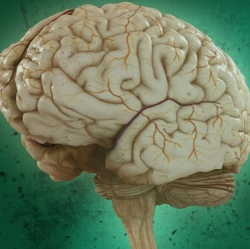
DARPA recently revealed a new project called the Neural Engineering System Design, or NESD, focused to create a chip no larger than a cubic centimetre in size, that could offer “unprecedented signal resolution and data-transfer bandwidth between the human brain and the digital world.”
As for how the new chip will work, it is designed to serve as a translator, converting electrochemical signals sent by neurons in the brain into the ones and zeros that computers understand, and vice versa.
“Today’s best brain-computer interface systems are like two supercomputers trying to talk to each other using an old 300-baud modem,” said Phillip Alvelda, the NESD program manager. “Imagine what will become possible when we upgrade our tools to really open the channel between the human brain and modern electronics.”
NESD is part of the Brain Research through Advancing Innovative Neurotechnologies (BRAIN) initiative launched by President Obama in 2013. The initiative is aimed to encourage research that will help cure, and even prevent brain disorders and traumatic brain injury.
DARPA has committed to investing up to $60 million in the NESD program over the next four years.
